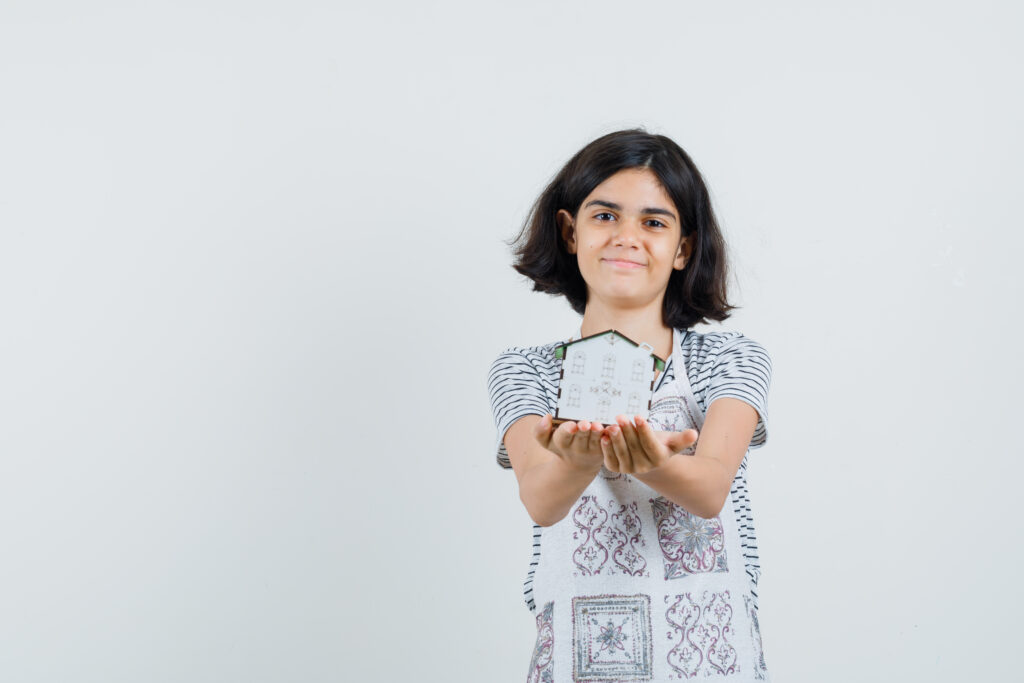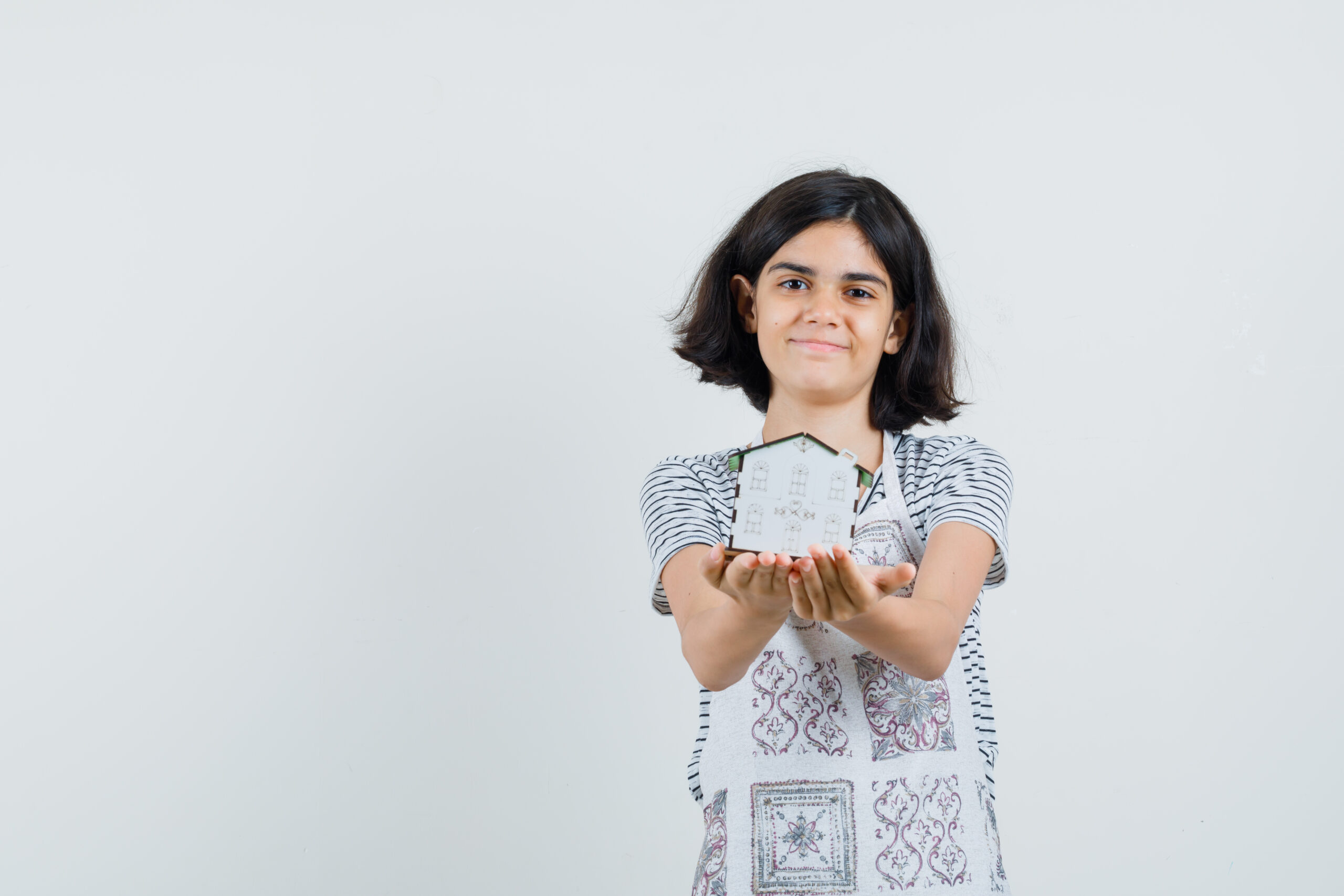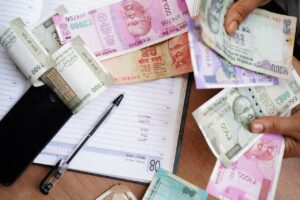Pocket Money Inflation 2025: How Rising Costs Are Shrinking Indian Children’s Allowances
Pocket money inflation has become a significant concern for Indian parents in 2025 as the purchasing power of children’s allowances continues to decline. With India’s inflation rate hovering around 5.5% (RBI Projections 2025), the same amount of pocket money that was sufficient last year no longer covers the same expenses. This phenomenon is particularly impactful on Indian children and teenagers who rely on these funds for their small purchases, savings goals, and financial education. Understanding pocket money inflation is crucial for Indian parents who want to provide meaningful financial lessons while ensuring their children can navigate the modern economy with confidence. For more insights on financial education, visit our blog.
“Inflation is when your money buys less than it used to, and this applies just as much to pocket money as it does to household budgets. Teaching Indian children about this economic reality is one of the most valuable financial lessons a parent can provide.” – Financial Education Expert
The concept of pocket money inflation isn’t just about numbers; it’s about the real-world impact on children’s financial socialization and their understanding of economic principles in the Indian context. When children notice that their weekly allowance no longer buys the same chocolate, toy, or game as before, they’re experiencing firsthand the effects of inflation. This creates a teachable moment that can help them understand complex economic concepts in a personal, relatable way. Indian parents who recognize this opportunity can transform a potentially frustrating situation into a valuable learning experience about economics, budgeting, and financial planning. To learn more about our approach to financial education, visit our about page.
“The greatest gift Indian parents can give their children isn’t more money, but the knowledge of how to make that money work effectively, especially in times of economic uncertainty.” – Child Financial Psychologist

Historical Context of Pocket Money Inflation in India
Pocket money has been a part of Indian childhood for generations, but its value and significance have evolved dramatically over time. In the 1990s, an average weekly allowance might have been just ₹10, which could buy a chocolate bar, a small toy, and still have change left over. Fast forward to 2025, and that same purchasing power would require over ₹100. This historical perspective helps us understand that pocket money inflation isn’t a new phenomenon, but rather an ongoing economic reality that has accelerated in recent years due to various factors including demonetization, GST implementation, and global economic pressures. You can test your financial knowledge with our interactive financial quiz.
“History shows us that money has always been a teaching tool in Indian families, and inflation has always been part of that lesson. The difference today is the speed at which these changes occur and the complexity of the economic landscape our children must navigate.” – Economic Historian
The historical trajectory of pocket money in India reveals interesting patterns about our society’s changing relationship with money, childhood financial education, and economic priorities. In the pre-liberalization era of the 1980s and early 1990s, pocket money was often minimal and tied to academic performance. As India’s economy opened up in the late 1990s and 2000s, pocket money amounts increased, but so did the expectations of what children should purchase with it. The 2010s saw the emergence of digital payments, online gaming, and eventually cryptocurrency discussions, creating new demands on children’s allowances. Today, with the rise of UPI payments, online gaming, and social media influences, the landscape of pocket money has become even more complex, making the effects of inflation more pronounced and challenging to manage. For engaging visual content on financial topics, check out our web stories.
“Understanding the history of pocket money in India helps us appreciate that financial education evolves with society. What worked for previous generations may need adaptation to remain relevant in today’s economic environment.” – Financial Historian

Current Pocket Money Statistics and Trends in India (2025)
Recent research reveals that the average pocket money for children in India in 2025 ranges from ₹100 to ₹500 per week depending on age, with teenagers in metro cities often receiving higher amounts. However, these figures vary significantly by region, socioeconomic status, and family financial philosophy. According to a 2025 survey by the National Institute of Public Finance and Policy, children aged 6-8 receive an average of ₹125 per week, while those aged 14-18 receive approximately ₹350 weekly. These amounts represent a nominal increase from previous years, but when adjusted for inflation, the real value has actually decreased for most age groups. For personalized financial advice, explore our services.
“Statistics tell only part of the story. The real measure of pocket money’s value isn’t in the rupee amount, but in what it can teach Indian children about financial decision-making in an inflationary environment.” – Child Development Researcher
The gender gap in pocket money remains another concerning trend in India, with boys consistently receiving more than girls for similar age groups and chores. A 2025 study by the Centre for Monitoring Indian Economy found that boys receive approximately 15% more pocket money than girls, a disparity that has remained relatively constant over the past decade despite increased awareness of gender equality. This gap becomes even more significant when viewed through the lens of inflation, as the cumulative effect over time can impact long-term financial behaviors and attitudes between genders. To calculate how inflation affects your savings, try our calculators.
“Financial disparities in childhood can translate to lifelong differences in financial confidence and capability. Addressing pocket money inequality is not just about fairness—it’s about equipping all Indian children with the tools they need for financial success.” – Gender Economics Expert
Pocket Money Inflation Comparison Table in India
To better understand the impact of inflation on pocket money in India, let’s examine how the purchasing power of a ₹100 weekly allowance has changed over time:
| Year | ₹100 Weekly Allowance Equivalent in 2025 Rupees | What ₹100 Could Buy Then | Common Items Purchased |
|---|---|---|---|
| 1990 | ₹1,850 | Movie ticket, chocolates, samosa | Cinema outing, snacks |
| 2000 | ₹950 | 2 movie tickets, popcorn | Entertainment, treats |
| 2010 | ₹450 | Music CD, fast food meal | Music, dining out |
| 2015 | ₹350 | Paperback book, chocolates | Reading material, sweets |
| 2020 | ₹250 | Fast food meal, small toy | Food, small purchases |
| 2023 | ₹150 | Mobile game top-up, snacks | Digital entertainment |
| 2025 | ₹100 | 2-3 cups of street tea | Limited snacks, digital items |
This table clearly illustrates the erosion of purchasing power over time in the Indian context. What was once a substantial amount that could cover entertainment and treats has now been reduced to covering only minor purchases. This inflationary pressure creates challenges for Indian parents who want to provide meaningful financial education through allowances while maintaining realistic expectations about what children can purchase with their money. For more financial insights, visit our blog.
“Inflation is the silent thief that steals value from money over time. For Indian children learning financial concepts, this can be confusing unless parents actively help them understand and adapt to these economic realities.” – Financial Literacy Advocate

Pros and Cons of Adjusting Pocket Money for Inflation in India
When considering how to address pocket money inflation in India, parents have several approaches, each with its own advantages and disadvantages:
| Approach | Pros | Cons |
|---|---|---|
| Regular inflation adjustments | Maintains purchasing power, teaches about economic realities | May create unrealistic expectations, can strain family budget |
| Fixed amounts with education | Encourages budgeting, prioritization skills | Can lead to frustration if money becomes insufficient |
| Performance-based increases | Rewards effort, teaches work-money connection | May create unhealthy competition, inconsistent income |
| Needs-based supplements | Ensures essential purchases are covered | May undermine budgeting lessons, create dependency |
| Digital currency allowances | Easy to track, can include educational apps | Less tangible, may not teach cash management |
Each approach reflects different values and educational priorities. Indian parents who prioritize maintaining purchasing power may opt for regular inflation adjustments, while those focused on teaching budgeting skills might prefer fixed amounts that force children to make choices. The best approach often involves a combination of strategies that evolve as the child matures and their understanding of financial concepts develops. To learn more about our financial philosophy, visit our about page.
“There is no one-size-fits-all solution to pocket money inflation in India. The most effective approach balances educational value with practical realities, adapting as children grow and economic conditions change.” – Family Financial Advisor
Strategies for Indian Parents Navigating Pocket Money Inflation
Indian parents can implement several effective strategies to address pocket money inflation while maximizing the educational value of allowances. First, consider implementing regular reviews of pocket money amounts in relation to inflation rates. This doesn’t necessarily mean matching inflation percentage-for-percentage, but rather assessing whether the current allowance still serves its intended purpose. For example, if the allowance is meant to cover school canteen expenses and the cost of school meals has increased by 15%, the allowance should be adjusted accordingly to maintain its original purpose. For personalized financial strategies, explore our services.
“Financial education isn’t about giving Indian children more money; it’s about giving them the knowledge to make the money they have work effectively, regardless of economic conditions.” – Parenting Finance Expert
Second, Indian parents can separate pocket money into different categories: spending, saving, and giving. This approach helps children understand that money has multiple purposes and teaches them to allocate resources accordingly. During inflationary periods, parents might choose to increase the saving portion while keeping spending amounts stable, encouraging children to save for larger purchases rather than spending immediately. This strategy not only addresses inflation but also builds valuable financial habits that will serve children throughout their lives in the Indian economic context. To calculate how much your child should save, use our calculators.
“Teaching Indian children to allocate money for different purposes is like teaching them to balance a thali—each element has its place and value, contributing to a complete financial diet.” – Financial Educator

Pocket Money Inflation FAQ
What is pocket money inflation?
Pocket money inflation refers to the decrease in purchasing power of children’s allowances over time due to rising prices. When the cost of goods and services increases, the same amount of pocket money buys less than it did previously, reducing its real value. For more financial concepts explained simply, visit our blog.
How does inflation affect children’s pocket money in India?
Inflation affects children’s pocket money by reducing what they can buy with the same amount. For example, if a child received ₹100 per week last year and inflation is 6%, that ₹100 now has the purchasing power of approximately ₹94, meaning the child can afford less with the same allowance. To calculate how inflation affects your child’s allowance, use our calculators.
How often should Indian parents increase pocket money for inflation?
There’s no fixed rule, but many financial experts recommend reviewing pocket money amounts at least annually and adjusting them based on inflation rates. Some parents prefer more frequent reviews, such as quarterly or semi-annually, especially during periods of high inflation. For personalized advice on adjusting allowances, explore our services.
What’s a reasonable pocket money amount for Indian children in 2025?
Reasonable amounts vary by age, location, and family financial situation. In 2025, a general guideline might be ₹100-₹150 per week for children aged 6-8, ₹200-₹300 for ages 9-12, and ₹350-₹500 for teenagers aged 13-18 in urban areas. These amounts should be adjusted based on local costs and family budgets. For more insights on appropriate allowances, visit our blog.
How can Indian parents teach children about inflation through pocket money?
Parents can teach children about inflation by discussing price changes for items they regularly purchase, showing how the same amount buys less over time, and involving children in decisions about adjusting allowances. Practical exercises like tracking prices of favorite items over several months can make inflation tangible. To test your child’s understanding of inflation, try our financial quiz.
Should pocket money increases be tied to inflation rates?
Tying pocket money increases to inflation rates can be a good approach for maintaining purchasing power, but it’s not always practical for family budgets. Many parents use inflation as a guideline but adjust based on what they can afford and what they believe is appropriate for their child’s age and needs. For personalized advice on allowance adjustments, explore our services.
How does pocket money inflation differ between urban and rural India?
Pocket money inflation affects both urban and rural areas, but the impact may differ. Urban areas often have more diverse spending options and may experience faster price changes for certain goods. Rural areas might have different consumption patterns and potentially slower price changes for some items, but also fewer income opportunities for children. For more insights on regional differences, visit our blog.
What are the long-term effects of experiencing pocket money inflation?
Children who experience pocket money inflation often develop better financial literacy, more conservative spending habits, greater appreciation for saving, and better understanding of economic principles. These early experiences can positively influence their financial behavior throughout adulthood. To learn more about long-term financial planning, explore our services.
How can Indian children make their pocket money stretch further during inflation?
Children can make their pocket money stretch further by prioritizing needs over wants, comparing prices before purchasing, looking for discounts and deals, considering second-hand options, delaying gratification for larger purchases, and setting aside a portion for savings. For more money-saving tips, visit our blog.
Should pocket money be tied to chores in India?
Tying pocket money to chores is a common approach in many Indian families, as it helps children understand the connection between work and earnings. However, some families prefer to provide a basic allowance separate from chores, with additional opportunities to earn money through extra tasks. The best approach depends on family values and goals. For more insights on allowance strategies, visit our blog.
Disclaimer
The information provided in this article is for educational purposes only and should not be considered as financial advice. Pocket money management strategies should be tailored to individual family circumstances and values. While we strive to provide accurate and up-to-date information, economic conditions and inflation rates may change. For personalized financial advice, please consult with a qualified financial advisor who can provide guidance based on your specific situation. If you’re interested in professional financial planning services, please visit our services page to learn more about how we can help you achieve your financial goals. For other inquiries or to share your thoughts on pocket money inflation, please contact us. Remember that financial education is a journey, and we’re here to support you every step of the way.













